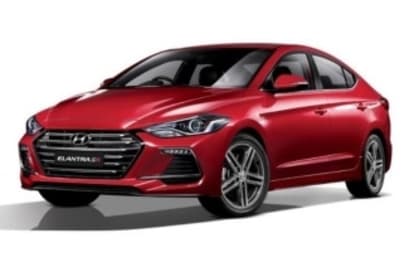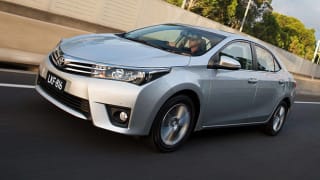How are you travelling, mate? Every Aussie understands that question. But to somebody from anywhere else in the world we’ve just enquired about their mode of transport. It’s a cultural thing. See despite Australians becoming more sophisticated and technology bringing the world closer together we still have our own way of doing things. That makes things tricky for Hyundai and its new-generation Elantra.
See, even though the Elantra is popular in the US, Korea and Russia, small sedans aren’t how Australians tend to do their travelling. But maybe Aussies aren’t giving the small sedan enough of a fair go?
Explore the 2016-2017 Hyundai Elantra range
When it comes to small cars we tend to prefer hatches, and bigger cars are sedans, well they used to be before we largely migrated to SUVs. But there are maybe some good reasons to leave our hatches behind in favour of a small sedan.
This is the sixth generation Elantra, it’s the sedan sibling to the i30 hatch which is much more popular. How much more popular? Well last year 32,306 i30s were sold in Australia, compared with 8346 Elantras. Ah, we hear you say: hatches are more versatile, they have a bigger boot. Stop it, you’re talking rubbish, they don’t necessarily. The i30’s boot is 378 litres, the Elantra’s is 458 litres. While the i30 may boast a larger boot opening, it is possible to fit more in an Elantra.
As for cost, the new the $21,490 base Elantra Active with a manual is $500 more than the entry i30, and that’s also exactly how much the price has gone up on the previous Elantra.
Hyundai has simplified the line-up to just two trim levels – that base spec Active and the $26,490 Elite which is auto only. If you want an auto in the Active trim it’s another $2500.
So what’s new? Everything, according to Hyundai, and the new body will also for the basis of the next i30. It looks similar to the last Elantra but the different grille, headlights, taillights and boot lid are dead giveaways that this is the new car.
Looks are arguably another edge sedans have over hatches and the sleek coupe lines that finish with a pronounced lip on the boot lid are attractive.
Hyundai’s Aussie engineers invested heavily to get it spot on for our roads too, with 48 different suspension combos tested before finding the sweet spot.
What you can’t tell just by looking is that 152 per cent more ultra-high tensile steel has gone into the car’s frame. It’s like having a stronger skeleton - it makes the car safer and handle better under the stress of cornering.
The interior also gets a new look, there’s 59mm more legroom in back and the controls on the dash and centre console are angled more towards the driver.
There are new features in the Active such as a 7-inch touchscreen, reversing camera, and auto headlights. The Elite gets these too plus a smart boot which will open if you're standing near it with the key. Both specs also get Apple CarPlay which lets you transfer the functions of your Apple iPhone to the car’s media system. Android Auto is expected to be available soon.
Hyundai says they didn’t include satnav in the features because CarPlay can access their iPhone’s satnav app, bit the problem is that if don’t have signal you don’t have satnav.
The Elantra also gets a bit more grunt with the 110kW/178Nm 1.8-litre four cylinder petrol engine replaced with a 112kW/192Nm 2.0-litre four. The bigger engine is thirstier and carries a 7.1L/100km combined figure with the six-speed manual (up 0.5L/100km) and 7.2L.100km with the six-speed auto (up 0.1L/100km).
The new Elantra hasn’t been crash tested in Australia yet, but the previous version had a five star safety rating and that result is expected again. On board are there a six airbags, ABS, EBD, plus stability and traction control.
On the road
That boot we mentioned earlier is actually 27 litres smaller than the last-generation Elantra’s but the reason why is a good one. The shock absorbers in the previous Elantra were fitted diagonally, but if you want to get a better range of motion it’s best to mount them vertically and in doing this they’ve eaten into the boot space.
We think even more grunt could be better in this car. And it looks like we won’t have to wait long.
This sounds like a minor thing, but orientating the dampers like this has added a new level of cushioning to help making the ride comfort outstanding. Hyundai’s Aussie engineers invested heavily to get it spot on for our roads too, with 48 different suspension combos tested before finding the sweet spot. The result is a car which handles confidently and with stability in corners while keeping a composed, comfortable ride.
The bigger engine is massively welcomed, Hyundai says it listened to customer feedback and gave the Elantra the oomph it needed. The accelerator in the auto (only the auto was available to drive at launch) is pretty sensitive and we think even more grunt could be better in this car. And it looks like we won’t have to wait long for it with Hyundai announcing that an sporty turbo SR model is in the works.












